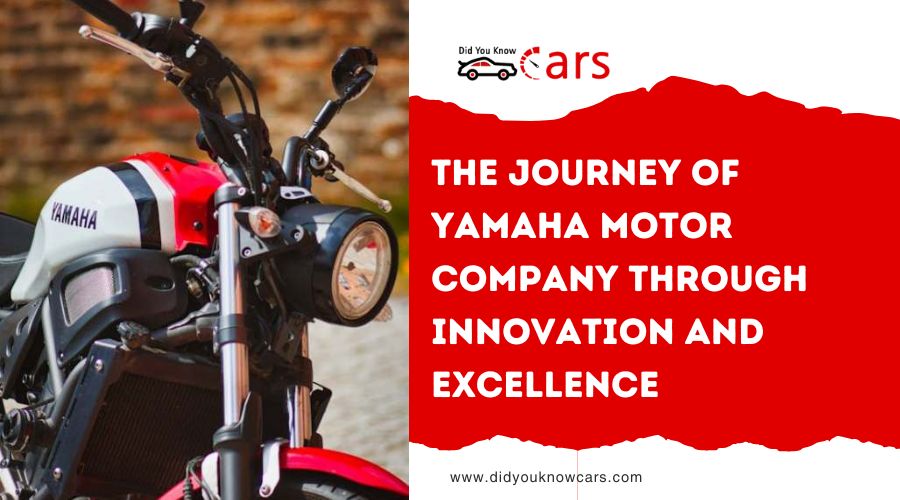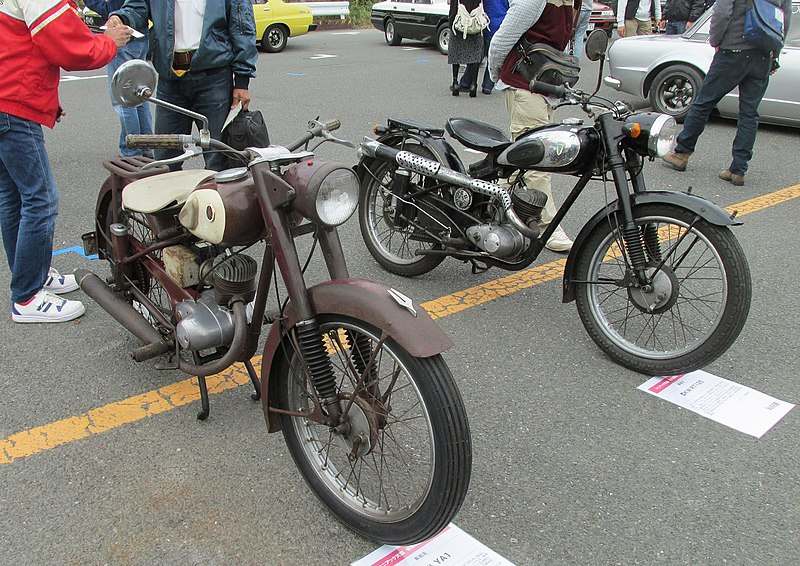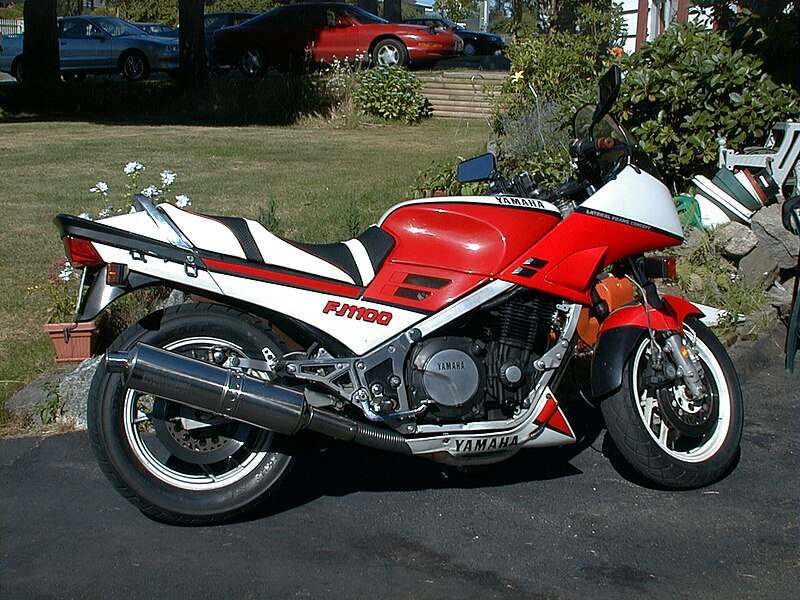Founded in 1955, Yamaha Motor Company has become a name synonymous with quality, innovation, and excellence in the world of motor vehicles and beyond. From its humble beginnings as a manufacturer of motorcycle engines, Yamaha has expanded its portfolio to include a wide range of products, from motorcycles and scooters to marine engines, electric generators, and even industrial robots.
This blog post delves into the rich history, diverse product range, and innovative spirit of Yamaha that has made it a global icon in the motor industry.
History of Yamaha Motor Company
Parent Company’s Roots
Back in 1887, Torakusu Yamaha started Nippon Gakki Co., Ltd – now known as Yamaha Corporation – with a focus on making reed organs and pianos. By the early 20th century, they had grown to be Japan’s largest musical instrument manufacturer. During World War II, the company shifted gears to produce wooden and, later, metal airplane propellers for the Japanese government. Post-war, things were tough, and in the early 1950s, chairman Genichi Kawakami decided to transform the company’s idle war-time production sites into facilities for crafting small leisure motorcycles.
The Early Days
Yamaha Motor Company was established on July 1, 1955, as a separate entity from Yamaha Corporation, the renowned musical instrument manufacturer. Led by Genichi Kawakami, the company decided to make use of the existing facilities and experience in metallurgy to venture into the motor industry.
The first product was the YA-1, a 125 cc two-stroke, single-cylinder motorcycle inspired by the German DKW RT 125. Right off the bat, the YA-1 made waves in racing by winning the 125cc class at the Mt. Fuji Ascent and dominating the All Japan Autobike Endurance Road Race with a first-, second-, and third-place sweep. Early on, this racing success showcased Yamaha’s deep commitment to the world of motorcycle racing, setting the stage for a longstanding involvement in the sport, often marked by intense rivalry with other Japanese manufacturers like Honda, Suzuki, and Kawasaki.
In 1956, Yamaha made its international racing debut with the YA-1 at the Catalina Grand Prix in the United States, securing a respectable sixth place. Following up in 1957 was the YA-2, another 125cc two-stroke, but with improved framing and suspension. That same year, Yamaha introduced the YD-1, a 250cc two-stroke twin-cylinder motorcycle that resembled the YA-2 but boasted a more robust engine. A high-performance variant, the YDS-1, featured this engine in a double downtube cradle frame and introduced the first five-speed transmission in a Japanese motorcycle. This era also marked Yamaha’s first foray into marine products with their initial outboard engine offering.
Expanding Horizons (1960s)
The 1960s were a time of major achievements and growth for Yamaha. In 1963, their commitment to two-stroke engines and racing bore fruit with a landmark win in the 250cc class at the Belgian GP – Yamaha’s first major international racing victory. This success wasn’t just limited to the racetrack; sales were booming, too. During this period, Yamaha began to establish its global presence, setting up its first international subsidiaries, starting with Thailand in 1964 and then the Netherlands in 1968.
1965 was another big year, with the launch of a 305cc two-stroke twin, the pride of Yamaha’s lineup. This model was innovative for its separate oil supply system, which directly injected oil into the gasoline before combustion, a big leap from the traditional method of pre-mixing oil with gasoline. 1967 saw the introduction of an even more powerful model, the 350cc two-stroke twin R-1.
In a significant shift, 1968 marked the debut of Yamaha’s first four-stroke motorcycle, the XS-1. This 650cc four-stroke twin was a powerhouse, matching the displacement and performance of popular British bikes of the time, like the Triumph Bonneville and BSA Gold Star.
Interestingly, while Yamaha continued to develop both two-stroke and four-stroke twins, other Japanese manufacturers, notably led by Honda with its legendary 1969 CB750, were moving towards four-cylinder four-stroke machines.
While motorcycles remain a significant part of Yamaha’s identity, the company has successfully diversified its product line. In the 1960s, Yamaha ventured into the marine industry with outboard motors, which quickly gained a reputation for quality and performance. The 1980s saw Yamaha entering the realm of four-wheeled vehicles with the production of all-terrain vehicles (ATVs) and, later, personal watercraft. Yamaha’s expansion didn’t stop there; the company also made significant strides in the development of unmanned helicopters for agricultural purposes and even ventured into the realm of industrial robots and electrically powered bicycles.
Yamaha’s Two-Stroke Era (1970s)
The 1970s marked an exciting period for Yamaha, especially with the introduction of reed-valve induction in early 1969. This technology was incorporated into their new twin-cylinder RD and single-cylinder RS families, available in various capacities.
Contrary to popular rumors, “RD” didn’t stand for “race developed.” Instead, it seems “R” indicated reed-valved, “D” denoted the twin-cylinder models, and “S” referred to the single-cylinder versions.
The RD family evolved significantly throughout the 1970s and 1980s, adopting features like solid wheels, water-cooling, and YPVS, transforming greatly from the original models before eventually being replaced by the TZR. The RS series, on the other hand, maintained a more consistent design over the years, even under production by Yamaha and later Escorts Limited in India.
Yamaha didn’t just stick to the RD and RS standards; they also produced smaller bikes with stamped steel frames and rotary disc-valved motors, such as the Yamaha FS1, as well as step-through models like the V-50 and V-80. The company’s Enduro trail bike was succeeded by the DT models.
It wasn’t until 1976 that Yamaha responded to other Japanese brands with their own multi-cylinder four-stroke, the XS-750 (and later 850), a 750cc triple-cylinder machine with shaft final drive. This model came nearly seven years after Honda’s groundbreaking bike.
Following this, Yamaha’s first four-cylinder model, the XS-1100, was introduced in 1978, also featuring shaft drive. Despite being more touring-oriented and heavier than its competitors, it achieved a series of impressive victories in endurance racing.
The 1970s also brought about some of the first dedicated off-road bikes for racing and recreation. Yamaha was a pioneer in dirt bike technology, introducing the world to the first single-shock rear suspension, the “Monoshock,” in 1973. This innovation debuted on the 1974 Yamaha YZ-250, a model that has continued production to this day, making it Yamaha’s longest continuous model and name.
Yamaha’s involvement in racing continued to grow in the 1960s and 1970s across various formats. A notable highlight of the 1970s was the XT500 winning the inaugural Paris-Dakar Rally in 1979.
A Time of Change and Innovation (1980s)
Yamaha’s commitment to innovation is evident in its product development and technological advancements. One of the company’s significant contributions to motorcycle technology was the introduction of the five-valve cylinder head, known as Genesis, which enhanced engine performance and efficiency. Yamaha also led the way in adopting electronic fuel injection systems and developing hybrid technology for scooters.
In the 1980s, Yamaha Motor adapted to new trends and broadened its horizons. The motorcycle industry itself was changing during this decade, moving from a few versatile models to a wider range of specialized bikes designed for specific purposes like racing, street riding, touring, motocross, enduro, off-road, and cruising. Yamaha transitioned from a limited range of Universal Japanese Motorcycles (UJMs) to a broader array of bikes tailored to specific market segments by the decade’s end.
As environmental regulations and consumer preferences shifted towards four-stroke engines, Yamaha stood out by continuing to refine and sell two-stroke bikes. These bikes were performance-focused, featuring water-cooled twin engines that leveraged the lighter weight of two-strokes for better performance. The RZ-250, introduced in 1980, kicked off this series, with the RZ-350 becoming a particularly popular choice through the 1980s and even into the early 1990s in some markets.
The 1981 XV750 was a standout, introducing one of the first Japanese cruiser-style motorcycles with an air-cooled V-twin four-stroke engine. By the late 1980s, Yamaha had expanded its cruiser line significantly, offering a variety of styles, displacements, and engine configurations.
The RZV500, one of the earliest “repli-racers,” mirrored Kenny Roberts’s competition GP bike. It boasted a liquid-cooled two-stroke 500cc V4 engine, a perimeter frame, and a full fairing.
In 1985, Yamaha launched the FZ750, a popular and practical high-performance model for street riding. It was an innovative bike with a 750cc four-stroke inline-four engine, famous for being the first to feature a five-valve cylinder head, a design Yamaha became known for. Its cylinder block was tilted forward at 45 degrees, and it had a box-section steel perimeter frame. The FZ750 continued in production until 1991.
Another performance-focused release was the Yamaha RX-Z in 1985, a two-stroke naked sport bike related to the Yamaha RX-135 and RD-135. Initially equipped with a five-speed transmission and solid front disc brake, it was a hit in Malaysia and Singapore.
Over time, it saw upgrades like a six-speed transmission, a new instrument panel, handlebar switches, and a cross-drilled front disc brake while maintaining its drum brakes at the rear. The design remained largely unchanged until 2004, except for a catalytic converter addition, which reduced its horsepower but maintained its torque. Despite its popularity, especially in Malaysia, where it was a cultural icon in street racing and films, it was discontinued in 2011 after a 26-year run.
High-Performance Bikes and New Brand Directions (1990s)
In 1995, Yamaha took a strategic step in the American market by launching Star Motorcycles, a new brand specifically for its cruiser series of motorcycles. This move was aimed at carving out a stronger identity in the cruiser segment, particularly in the US, where this market is quite significant. However, outside of the US, these Star motorcycles continued to be sold under the Yamaha brand.
1998 was a significant year for Yamaha as they introduced the YZF ‘R1’, a 1000cc four-cylinder road bike. This model was notable for its innovative gearbox design, which reduced the size of the motor/gearbox case. This compact design allowed the motor to be positioned further forward in the frame, enhancing handling in a bike with a shorter wheelbase.
Growth and Strengthening (2000s)
Yamaha continued to expand its global presence in the 2000s. In 2007, they set up operations in the Philippines, distributing Yamaha motorcycles through Yamaha Motor Philippines, Inc. This was just one of over 20 of Yamaha’s subsidiaries operating worldwide, highlighting the company’s international reach.
Yamaha also made a strategic acquisition in 2017, purchasing the small engine manufacturer Subaru Industrial Power Products from Subaru. These engines, which powered equipment like lawnmowers, generators, and water pumps, were subsequently rebranded as Yamaha, further diversifying and strengthening Yamaha’s product lineup.
Yamaha Motor Company’s corporate philosophy and approach to sustainability are deeply intertwined, reflecting a commitment to both creating exceptional products and being mindful of their environmental impact. Their concept of “Kando” encapsulates this dual focus,” a guiding principle that underpins all of Yamaha’s endeavors.
Yamaha’s Corporate Philosophy
“Kando” Philosophy
Central to Yamaha’s ethos is the concept of “Kando,” a Japanese term for the simultaneous feelings of deep satisfaction and intense excitement. This philosophy drives Yamaha to create products that bring joy and enrichment to people’s lives. Yamaha strives to evoke these emotions through its products and services, aiming to exceed customer expectations and offer truly enriching experiences.
In practice, this means that Yamaha’s product development teams are focused on technical excellence and how their motorcycles, boats, or other products make their customers feel. Whether it’s the thrill of acceleration on a motorcycle or the joy of exploring the seas on a boat, Yamaha aims to deliver products that resonate emotionally with its users.
Commitment to Sustainability
Recognizing its responsibility towards the environment, Yamaha is committed to sustainable practices. This commitment is reflected in the company’s efforts to reduce its carbon footprint, manage natural resources responsibly, and minimize the environmental impact of its manufacturing processes and products.
Yamaha invests in research and development to create eco-friendly products. This includes exploring alternative energy sources, developing electric vehicles, and improving the efficiency and emissions of their traditional combustion engines.
Beyond products, Yamaha focuses on sustainable manufacturing processes. This includes reducing waste, recycling materials, and using renewable energy sources in their factories and offices. The company also adheres to strict environmental regulations and often aims to exceed these standards in its global operations.
Balancing Growth and Conservation
A key challenge for Yamaha is balancing business growth with environmental conservation. The company recognizes that long-term success depends on its ability to operate sustainably and responsibly. This means making strategic decisions that ensure profitability and market leadership while also contributing positively to the planet and society.
Yamaha views sustainability as a driving force for innovation. By focusing on eco-friendly technologies and practices, Yamaha contributes to a healthier planet and positions itself as a leader in emerging markets for green technologies and sustainable transportation solutions.
Yamaha Motor Company’s Product Offerings
Yamaha Motor Company, widely recognized for its motorcycles, has a diverse range of product offerings that extend well beyond two-wheelers. The company has successfully diversified its portfolio over the years, catering to various segments in the motor industry and beyond. Here are their diverse offerings:
Motorcycles
- Sport Bikes: Known for high performance and advanced technology, models like the YZF-R1 and YZF-R6 are popular among enthusiasts.
- Cruisers: Yamaha offers cruisers like the Star series, which are known for their comfort and style.
- Off-road Bikes: This includes motocross and enduro bikes designed for off-road racing and adventure.
- Dual-Purpose Bikes: These bikes, like the XT250, are suitable for both on-road and off-road use.
Scooters
Yamaha’s range of scooters is known for their fuel efficiency, ease of use, and urban mobility. Models vary from lightweight and agile to more powerful options.
All-Terrain Vehicles (ATVs)
Yamaha’s ATVs are popular in both recreational and professional settings. They offer a range of utility and sport ATVs, known for their durability and performance.
Side-by-Side Vehicles
These are off-road capable vehicles that can accommodate more than one rider. They are used for both recreation and work-related activities.
Snowmobiles
Yamaha snowmobiles are known for their powerful engines and advanced suspension systems, which are suitable for both recreational and competitive purposes.
Marine Products
- Outboard Motors: Yamaha is a leading name in marine outboard motors, known for their reliability and innovation.
- Boats: They offer a variety of boats, including wakeboard and fishing boats.
- Personal Watercraft: Yamaha’s WaveRunners are popular in the personal watercraft segment for their performance and innovation.
Electric Power Products
This includes generators, electrically power-assisted bicycles, and other electric power units.
Unmanned Aerial Vehicles
Yamaha has ventured into UAVs, particularly for agricultural purposes, like crop dusting and monitoring.
Golf Cars
Yamaha produces a range of golf cars known for their comfort and reliability.
Industrial Robots
Diversifying into automation, Yamaha offers a variety of industrial robots used in manufacturing processes.
Pool-related Products
Yamaha also provides products for swimming pool maintenance and cleaning.
Others
The company has expanded into new areas like electric wheelchairs and also produces parts and accessories for its various products.
Conclusion
Yamaha Motor Company’s journey from a small motorcycle manufacturer to a global powerhouse in various motor-related fields is a story of vision, innovation, and dedication to quality. By continuously pushing the boundaries of technology and expanding its product range, Yamaha has not only established itself as a leader in the motor industry but also as a brand that resonates with customers worldwide. With its eyes firmly set on the future, Yamaha is poised to continue its legacy of creating exceptional products that bring Kando to people around the globe.




